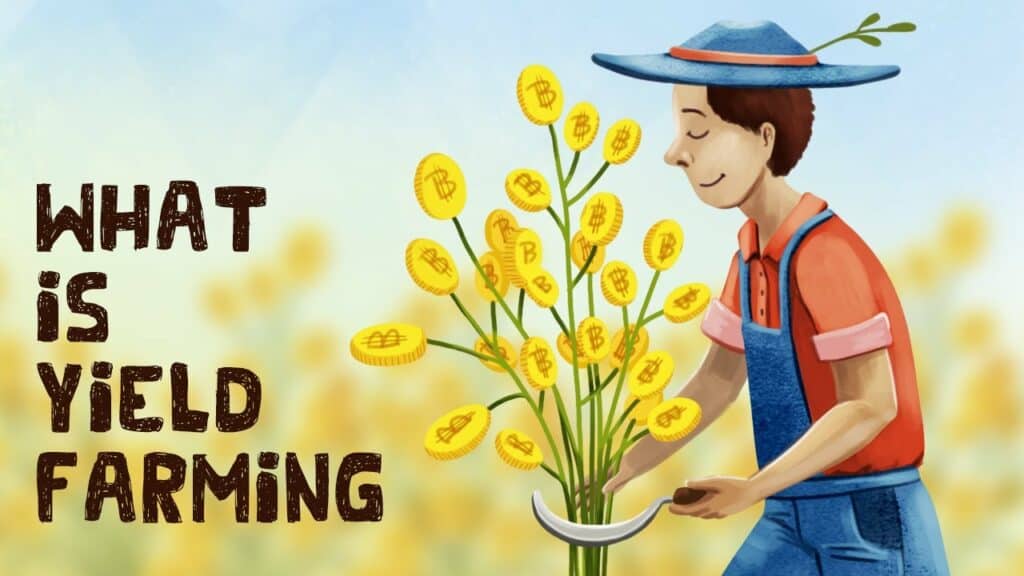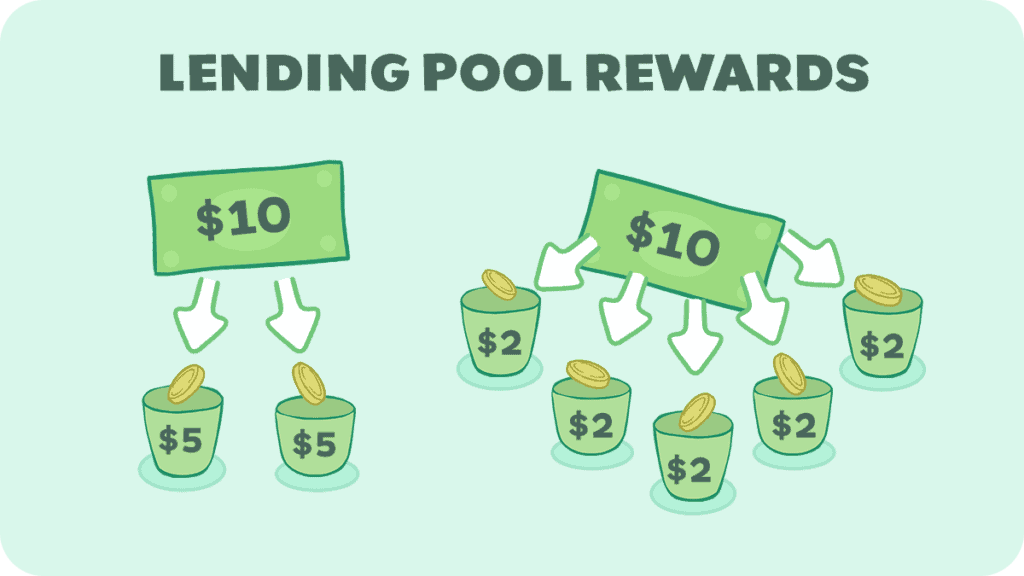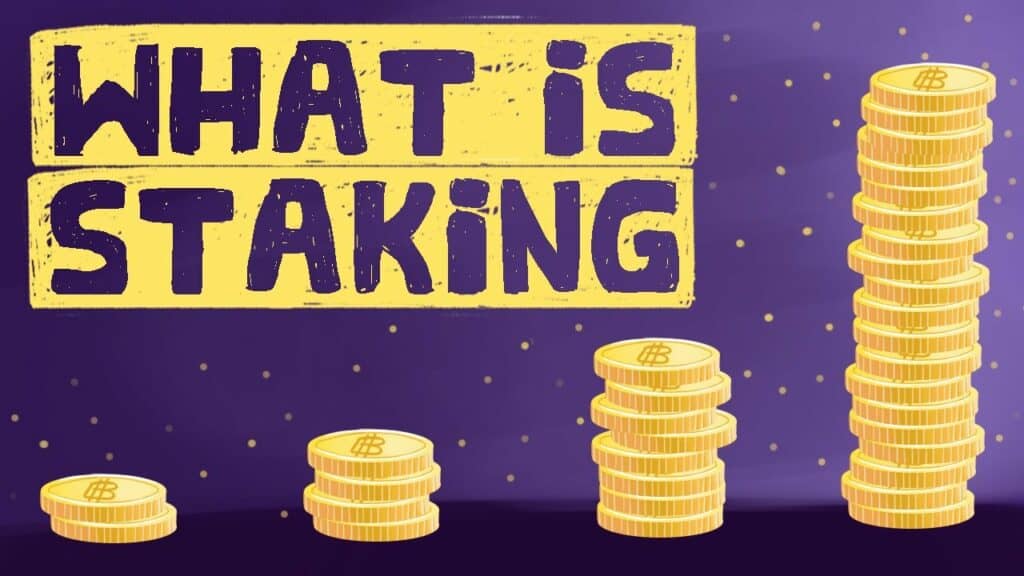Yield Farming is the process of putting your crypto in the most optimized place so that it will earn you even more free crypto.
Yield is a financial term that means “what you get for investing.” The term “farming” is used because it represents the possible exponential growth you can receive by finding the right place to invest.
To put this into perspective and get you excited, most US banks can promise around $1 a year, for every $1000 invested. Some big name Yield Farming opportunities are currently advertising $3000 a year, for every $1000 invested.
How Does Yield Farming Work?

Before we start with this video, you might want to grab a chair and pull up your pants because this topic is a fun one. However, it’s also quite complicated. Our job at Whiteboard crypto is to make it very understandable, and to do that, you will require some knowledge on topics that we’ve already explained.
We suggest you check out our content on Liquidity Pools, Impermanent Loss, and how an Automated Market Maker works. They will greatly improve your understanding. But sticking in line with our original slogan, we will try to make the topic of Yield Farming “so simple that your grandpa could understand it.”
Let’s dig in.
Right now lending and borrowing with cryptocurrency is very new. Because of this, there are a ton of entrepreneurs and developers working very hard to create the next big bank, but with the help of blockchain technology.
Some of these opportunities have a crazy amount of money flowing into them, and yield farming is essentially figuring out the best place to put your money so you see the highest return. There are many different ways to do that, and in this article we are going to cover four basic methods, along with a bonus method.
1) Liquidity Providers
Investors can supply coins and tokens to a decentralized exchange. In return, the exchange takes a very small fee of all the trades happening on the platform and gives it back to the investors.
If there are a TON of trades happening, and the investor is one of a few other investors, they can earn a very high return on their initial investment.
Here’s a real quick example. Let’s say you have $1000 to invest. You put $500 of ETH and $500 Basic Attention Token (BAT) into a liquidity pool on Uniswap. Uniswap is a decentralized exchange that runs on the Ethereum network.
Your $1000 means you now own 1% of that entire pool because there were some other investors before you who deposited $99,000, and with your investment, the total is 100k.
The next day, around $1,000,000 gets traded back and forth between ETH and BAT on Uniswap, and Uniswap’s fee is .3%. So this means $3000 was collected during those trades. Your percentage of those fees is $30, and so you earned $30 in one day, based on your initial $1000 investment, which is a HUGE return.
The money came from traders who happily paid it so they could switch back and forth from ETH to BAT using the funds you provided.
You can actually go to info.uniswap.org to see current rates for providing liquidity.
Pancakeswap is another major decentralized exchange that runs on the Binance Smart Chain, which is very similar to Ethereum, but has lower gas fees at the moment.
Quickswap is another big player that also lets you switch out your Matic tokens.
2) Borrowing and Lending

Borrowing and lending are two BIG functions when it comes to yield farming, and there are many ways you can produce income with these methods.
Lending
Many borrowing and lending services will provide rewards to those who lend their crypto to the platform. For example, Compound and AAVE show their lending rates within their app. Some rates for specific coins go over 30% APR, while others are close to 0.
Since many traditional banks offer .5% APR and the stock market has roughly returned 7%, anything above this seems like a delicious alternative to any investor. Plus investing is very simple and you can cash out at any time.
Borrowing
The other side of lending is borrowing, and you can make money with this as well.
Imagine if you had some ETH laying around and wanted to take out a loan, but didn’t want to cash out the ETH because you thought it was going to go up in price—you believed in the project.
Well, you could borrow some DAI, which is a stablecoin, and lock up your ETH as collateral. When it comes to crypto loans, all loans are always over-collateralized. This means to take a loan, you must provide MORE money than the loan is worth.
This is so there is no way you can run away with the money you borrowed, because there is something of higher value that you’d rather get back.
Let’s say you have $15,000 worth of ETH.
So you can borrow and use $10,000 of DAI until you wanted to pay it back, of course there would be interest, and you’d want to slowly pay that off.
When you want, you can pay back the $10,000 of DAI and get back your ETH, which hopefully has increased in value. So you were able to use the value of your ETH, while still allowing it to appreciate in value. This is a form of yield farming.
This is comparable to taking out a loan on a house—you can use the money of the value of the house, while the house still grows in value.
Leveraged Lending
Next up, we have lending on steroids. So when you lend your money to platforms like Compound or AAVE, you take what you can borrow and reinvest it.
For example, if you deposit $100 worth of Basic Attention Token (BAT), these platforms allow you to borrow $60 in DAI from it. First, there is a 30% APR of providing BAT, so you’re already earning passive income through this. It’s not always 30% but right now the price of BAT is very volatile.
Next up is the steroid part. You take that $60 of DAI, convert it to BAT using a decentralized exchange. Now with your $60 of Basic Attention Token, you supply it to Compound or AAVE, and now you have $160 earning that 30% APR.
However, now since you have another $60 deposited, you can take out a loan of $36 in DAI. Now you can repeat the process, go buy BAT, and redeposit it. Now you have almost $200 of BAT earning 30% APR.
So you only had $100, but are earning 30% interest on $200 worth of assets. This is the golden egg of Yield Farming.
There are risks, and the first risk you should know about is if Basic Attention Token’s price falls, the platform may automatically sell your positions (which is called being liquidated) to cover their butts.
You are essentially creating a margin option, and this is another topic that could be it’s own page.
3) Staking

Staking is technically a form of yield farming, because you can buy coins, stake them, and then earn more free coins.
The first example we are going to go over is Tezos. In 2021, Tezos had around a 6% APY, although you have to have the hardware and knowledge to set up your own staking node that would be reliable throughout the year.
One common way to avoid this is to stake through a platform like Coinbase, which takes a cut of your 6% but you still earn something.
Next up, we have Ethereum, which became proof of stake (PoS) in 2022. Ethereum moved from Proof of Work (PoW) to PoS, which means instead of a bunch of miners doing a ton of work to mine ether, the code is changing so that only one miner at a time will earn ETH.
You can participate in the network and get the lucky chance to be one of these miners, and if you do, you’ll earn ETH. Again, setting up a staking node is complicated for beginners, but platforms like Coinbase are already offering to do it for you for a certain fee.
Lastly, we have staking LP tokens. LP tokens are the tokens you get when you provide liquidity. For example, if you provide liquidity to Uniswap using ETH and BAT, you might receive some ETH-BATuniswap token. These tokens are redeemable at any point for your percentage of the pool’s value.
However, many platforms allow you to stake these tokens so that you earn interest on them. Why? Well, they want to incentivize you to leave them alone so you don’t pull out your liquidity—and this interest rate does just that.
It should be noted that many liquidity pools will give you their native token, such as UNI or CAKE, as a reward for staking your LP tokens, and these tokens are usually deflationary in nature, which means the platform just keeps making more and more and generally this means the price will decrease.
This is why many investors do not recommend investing in a liquidity pool token—because they say eventually the price will go to 0.
4) Holding coins that have a redistribution fee
One way to earn free crypto is to buy a crypto that has a redistribution fee.
For example, the coin Safemoon has a 10% transaction fee. 5% is burned forever, and the idea of this is so that the supply of Safemoon is always decreasing, which theoretically should increase the price because there is constantly less and less of it.
The other 5% is redistributed evenly to all other holders. So just by holding the coin Safemoon, you will earn free Safemoon while everyone else does their transactions. You have to be VERY careful with a coin like this though, as nothing like this has ever been scaled to such a large market cap before and the risks associated with a deflationary coin are something to think about.
Do your own research before investing in any coin. Many experts are saying Safemoon is a speculative investment because no other crypto that has a transaction fee similar to Safemoon has been created. In short, even the experts have no idea what will happen long term.
Bonus: Auto-Compounding
PancakeBunny is a yield optimizer that uses PancakeSwap’s decentralized exchange to offer rewards for investing in their token.
They have a feature called “AutoCompound” where it will take your earnings and automatically add it back to your initial investment. This way, your earnings will start earning. In short, this takes control of the power of exponential growth.
This idea isn’t new, but PancakeBunny was one of the first platforms to get traction for it.
Risks
Now, with high return comes high risk, and yield farming does have some high risks. One of the major risks are Rug Pulls and Impermanent Loss.
Rug pulls are when the developers pull out of the project, and take all the money with them. Impermanent loss is when the value of one token vastly changes compared to the other token.
Both are likely, so it’s important to keep your eye on the yield farms you’re involved in.
Conclusion
Yield farming can be lucrative, but it can also be really risky. Only put in what you can afford to lose, and be careful!
Thanks for reading, we hope you enjoyed it, and we really hope you learned something.

